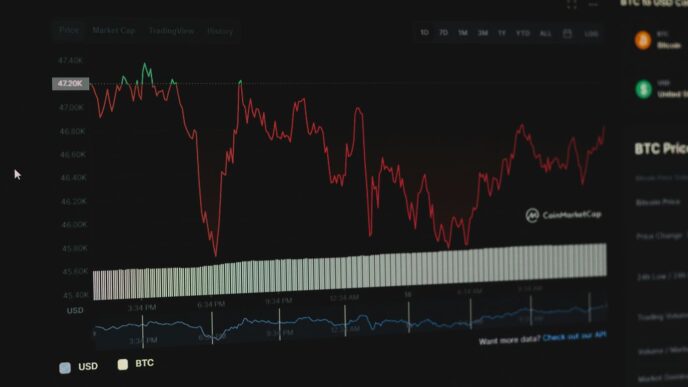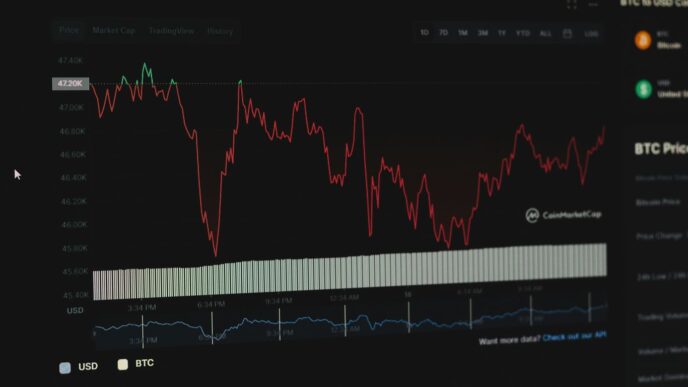So, you’re looking to get some money for your startup in 2025? It’s a bit different out there now compared to a couple of years ago. The money isn’t flowing quite as freely, and the firms that do invest are looking really closely at what you’ve got. It’s not just about a cool idea anymore; they want to see you’ve actually built something and that you know how to manage your cash. This article breaks down what these capital venture firms are looking for and how you can stand out.
Key Takeaways
- The funding climate has changed; expect less money and more scrutiny from capital venture firms.
- To get investment, show real results with solid numbers and explain why your business is different.
- Capital venture firms follow a clear process: they find companies, check them out thoroughly, and then decide on terms and support.
- Big names like Andreessen Horowitz and Sequoia Capital have specific ways they invest and support companies, making them stand out.
- Think beyond just traditional VC money – look into other funding options to keep your business strong.
Understanding the Evolving Venture Capital Climate
The world of venture capital has definitely seen some big shifts lately. Remember those wild days of 2020 and 2021? Funding was everywhere, interest rates were practically zero, and startups could raise money almost overnight, often with less scrutiny. It felt like a gold rush. But that party has definitely wound down.
From Boom to Correction: The Shift in Funding
We’ve moved from a period of abundant capital to a much more reserved market. Think of it like going from a wide-open buffet to a carefully curated tasting menu. Many of the players who jumped in during the boom, like hedge funds and other non-traditional investors, have pulled back significantly. This means the money available for startups isn’t as plentiful as it was. The days of easy money and sky-high valuations are largely behind us.
Navigating Capital Constraints and Higher Expectations
With less capital flowing, venture firms are being much more selective. They’re not just looking at a good idea anymore; they want to see real proof that a business is working. This means founders need to show solid metrics, like customer growth, revenue, and engagement, before they can even hope to get a meeting. The bar has been raised, and companies need to demonstrate they can operate efficiently and grow sustainably, even with less funding.
The New Normal: Scarcer Capital, Higher Selectivity
So, what does this mean for startups in 2025? It’s a market where capital is harder to come by, and investors are picking their shots much more carefully. Funding rounds might take longer, and the terms might not be as favorable as they were a couple of years ago. It’s a return to a more traditional approach, where strong business fundamentals and clear paths to profitability are what really matter. Founders need to be prepared for a more rigorous process and focus on building resilient businesses that can thrive even in a tighter economic climate.
Key Strategies for Securing Capital Venture Firm Investment
Securing investment from a capital venture firm in 2025 requires a sharp focus on what truly matters to these investors. The market has shifted, and simply having a good idea isn’t enough anymore. You need to show tangible proof that your business is on the right track and that you’re not just another company trying to get by.
Proving Traction Through Concrete Metrics
Forget vague promises. Venture capital firms want to see numbers that demonstrate real progress. This means having clear, measurable data that shows your business is growing and has a solid customer base. Think about:
- Customer Acquisition Cost (CAC): How much does it cost to get a new customer?
- Customer Lifetime Value (CLTV): How much revenue does a customer bring in over time?
- Monthly Recurring Revenue (MRR) or Annual Recurring Revenue (ARR): For subscription businesses, this is key.
- User Engagement Metrics: How often are people using your product or service?
- Churn Rate: How many customers are you losing?
Showing a healthy ratio of CLTV to CAC is a strong indicator of a sustainable business model. Having this data ready, organized, and easily accessible in a data room before you even start talking to investors builds immediate confidence. It shows you’re serious and understand the financial health of your company.
Differentiating Clearly from Competitors
In a crowded market, you need to stand out. What makes your company unique? It’s not just about having a better product; it’s about how you position yourself. Consider these points:
- Unique Value Proposition: What specific problem do you solve, and how do you solve it better than anyone else?
- Intellectual Property (IP): Do you have patents or proprietary technology that creates a barrier to entry for others? This can be a significant differentiator. You can explore patent landscape analysis to understand your competitive IP environment.
- Market Niche: Are you targeting a specific, underserved segment of the market?
- Team Expertise: Does your team have unique skills or experience that others lack?
Clearly articulating these differences helps investors see why your company has a competitive edge and a better chance of succeeding.
Operating with Capital Discipline
Investors are looking for founders who are smart with money. This means showing that you can manage your finances responsibly and make strategic decisions about where to allocate resources. It’s about being lean and focused.
- Budget Management: Demonstrate a clear understanding of your burn rate and how you plan to use the investment funds.
- Scalability: Show that your business model can grow efficiently without a proportional increase in costs.
- Focus on Core Business: Avoid spreading yourself too thin. Concentrate on what drives revenue and growth.
Operating with capital discipline signals maturity and a realistic approach to business, which is exactly what capital venture firms want to see in their portfolio companies.
How Capital Venture Firms Make Investment Decisions
So, how do these big-shot venture capital (VC) firms actually decide which companies get the money? It’s not just a gut feeling, though that probably plays a small part. They have a pretty organized way of doing things, and understanding it can really help if you’re trying to get them interested in your startup.
The Structured Process: From Sourcing to Investment
It all starts with finding companies. VCs don’t just sit around waiting for emails. They’re out there, hitting up industry events, talking to their contacts, and keeping an eye on accelerators. They’re basically hunting for the next big thing. Once they spot a potential winner, they do a quick check to see if it fits what they’re looking for – like the industry they focus on or the stage of the company. If it passes that first look, they dig deeper.
Due Diligence: Analyzing Business Models and Teams
This is where things get serious. They’ll really look at how your business works, who your customers are, and if your market is big enough. They’ll also scrutinize your financials – are you spending money wisely? And, of course, they’re checking out the team. Who are you, and can you actually pull this off? They want to see that you have the right people with the right skills to make the company succeed.
Here’s a quick look at what they’re usually checking:
- Market Size: How big is the opportunity?
- Product/Service: Is it unique and does it solve a real problem?
- Team: Do they have the experience and drive?
- Financials: What’s your revenue, burn rate, and projections?
- Competition: Who else is out there, and how are you different?
Valuation, Terms, and Post-Investment Support
If all the checks come back positive, they’ll start talking numbers. This is where they figure out what your company is worth and what percentage they’ll get for their investment. It’s a negotiation, for sure. They want to make sure they get a good return, but they also don’t want to make it so tough for you that you can’t operate. After they invest, they don’t just walk away. Most VCs will stick around, offering advice, making introductions to potential customers or partners, and generally helping you grow. They’re invested in your success because, well, that’s how they make their money.
Leading Capital Venture Firms and Their Differentiating Factors
When you’re looking for money to get your startup off the ground, or to help it grow, you’ll hear a lot about the big venture capital (VC) firms. These aren’t just places that hand out cash; they’re often partners who bring a lot more to the table. But not all VC firms are the same, and knowing what makes them tick can really help you find the right fit.
Andreessen Horowitz: Stellar Track Records and Focus Areas
Andreessen Horowitz, or a16z as most people call it, has built a serious reputation. They’ve backed some huge names you probably use every day, like Facebook, Airbnb, and Lyft. It’s not just luck, though. Before they even formed the firm, the main partners were already investing in lots of early-stage companies. They tend to focus on specific areas like software for businesses, money tech (fintech), cybersecurity, and health tech. Plus, they put out a lot of good content, like their podcast, which gives you a peek into how they think.
Sequoia Capital: Company Design and Global Reach
Sequoia Capital is one of the older players in the game, starting way back in 1972. They’ve been around long enough to see a lot of market shifts. What sets them apart is their idea of "Company Design." It’s basically a roadmap for building companies that last. They’re also a global firm, with offices and investments all over the world, not just in Silicon Valley. Think companies like DoorDash, Stripe, and Zoom – they’ve been involved with those. They invest from the very early stages all the way up to growth rounds.
Accel and Bessemer Venture Partners: Notable Investments and Philosophies
Accel is another firm with a strong history, backing companies like Dropbox and Etsy. They’ve got a good eye for consumer tech and software. Bessemer Venture Partners is also worth mentioning. They’re known for being pretty open about their investments, even talking about the companies they didn’t invest in, which they call their "Anti-Portfolio." This gives a different kind of insight into their thinking. Both firms have a solid track record of picking winners and have different ways they like to work with the companies they back, often focusing on long-term growth and strong relationships.
Beyond Traditional Funding: Alternative Capital Sources
Look, venture capital isn’t the only game in town anymore, and frankly, it might not be the best fit for everyone. The funding climate has shifted, and relying solely on VC firms can be risky. It’s smart to think about other ways to get cash for your business. This means looking at options that might not come with the same level of control or expectations as a traditional VC deal.
Exploring Revenue-Based Financing and Strategic Partnerships
Revenue-based financing, or RBF, is pretty interesting. Instead of giving up equity, you pay back the investor a percentage of your monthly revenue. It’s like a loan, but tied directly to how much money you’re actually bringing in. This can be a good way to grow without diluting your ownership. Companies that have predictable, recurring revenue streams often find RBF particularly attractive. Strategic partnerships are another avenue. Think about teaming up with a larger company in your industry. They might invest in you for access to your technology or market, and in return, you get capital and potentially a valuable distribution channel. It’s a trade-off, but one that can really move the needle.
Leveraging Angel Syndicates and Ecosystem Grants
Angel investors are still a big deal, especially in the early stages. But instead of just one angel, you can sometimes find groups, or syndicates, that pool their money together. This can mean more capital and a wider network of advisors. It’s worth looking into local angel networks or online platforms that connect founders with these groups. Then there are grants. Depending on your industry and location, there might be government programs or private foundations offering grants for innovation, research, or specific social impact goals. These are essentially free money, though they often come with reporting requirements and specific use-case restrictions.
Diversifying Funding Pathways for Financial Resilience
So, why bother with all these different options? It’s all about building a stronger, more resilient business. If one funding source dries up, you’ve got others to fall back on. It spreads out your risk. Imagine this: you’re a startup with a solid product but maybe not the explosive growth VCs always want. You could get some RBF to cover operational costs, bring in a strategic partner for market access, and then use an angel syndicate for a larger growth push. This multi-pronged approach means you’re not putting all your eggs in one basket. It gives you more control over your company’s destiny and can help you weather economic downturns or shifts in investor sentiment more effectively. It’s about being adaptable and smart with how you finance your growth.
The Crucial Role of Intellectual Property in Capital Venture
When you’re trying to get money from venture capital firms, it’s not just about having a good idea or a slick presentation. What you’ve actually created, and how you protect it, matters a lot. Think of your intellectual property, or IP, as the foundation of your company’s unique value. Venture capitalists are looking closely at this, especially now. They want to see that you’ve thought about protecting your innovations, not just creating them.
Analyzing Innovation for Patent Protection
Before you even think about filing patents, you need to really look at what makes your company special. What problem are you solving that no one else is, or at least not in the same way? What’s the core technology that sets you apart? Figuring this out helps you decide where to focus your patent efforts. It’s like knowing which parts of your invention are the most valuable and need the strongest shields. Getting this right early on can save a lot of time and money later.
Developing Defensive and Offensive Patent Strategies
Having patents isn’t just about stopping others from copying you. It’s also about building a strong position for your company. A defensive strategy means getting patents that prevent others from suing you, which can be a big worry for investors. An offensive strategy uses your patents to protect your market share and maybe even to make money through licensing. It’s about using your IP as a tool, not just a shield.
Here’s a breakdown of how to think about it:
- Defensive: Patents that block competitors from suing you or entering your market space.
- Offensive: Patents that give you an advantage, allowing you to expand into new areas or license your technology.
- Strategic Alignment: Making sure your patent goals match your company’s overall business plan and funding stages.
Highlighting IP in Investor Discussions
When you’re talking to venture capital firms, don’t keep your IP strategy a secret. Bring it up! Show them you’ve done your homework. Talk about your patent landscape analysis – that’s where you look at what other companies have patented. This shows investors you understand the competitive environment and have a plan to protect your own innovations. It tells them you’re serious about long-term growth and reducing risks. It can really make your company stand out from others that might have similar ideas but haven’t thought about protection.
The Evolving Relationship Between Capital Venture Firms and Entrepreneurs
It feels like just yesterday we were all talking about the wild west of startup funding, but things are definitely shifting. The connection between venture capital (VC) firms and the folks actually building the companies – the entrepreneurs – is changing, and it’s important to get a handle on it.
Think of it like this: VCs are the ones with the money, and entrepreneurs are the ones with the big ideas and the drive to make them happen. When they work well together, it’s pretty amazing. Companies get the cash they need to grow, hire people, and really make a dent in the world. But, let’s be real, it’s not always smooth sailing. There can be different ideas about how fast things should move or how much risk is okay. VCs have their own investors to answer to, and entrepreneurs are usually putting everything on the line for their one big idea.
So, how do you make sure you’re on the same page? It really comes down to a few key things:
- Open Talk from Day One: Don’t wait for problems to pop up. Have honest chats about what everyone expects, what’s most important, and what success looks like. This sets a good foundation.
- Shared Goals: Figure out how your goals and the VC’s goals can actually work together. It’s not just about the money; it’s about building something lasting.
- Building Trust: This takes time. It means being upfront, listening when the other person talks, and working together towards that common vision.
Ultimately, a strong partnership between a VC and an entrepreneur is built on trust and clear communication. When that happens, you get more than just funding; you get a real partner who’s invested in your success, helping to drive real change and create something that lasts.
Looking Ahead: What Founders and Investors Need to Remember
So, as we wrap up our look at the venture capital scene for 2025, it’s clear things have shifted. Gone are the days of easy money and quick deals. Today’s market demands more from startups – solid proof of what they can do, a clear plan, and smart money management. Investors are being more careful, looking for companies that are really built to last, not just flash in the pan. For founders, this means getting your ducks in a row early, like having all your important documents ready before you even talk to anyone. And remember, VC isn’t the only game in town; there are other ways to get funding too. The firms we talked about, like a16z and Sequoia, are still major players, but they’re looking for different things now. Ultimately, building a strong company, being honest with investors, and adapting to the market are the keys to success. It’s a tougher road, sure, but it’s also one that rewards real substance and good planning.
Frequently Asked Questions
What exactly is venture capital and how does it work?
Think of venture capital firms as special banks for new, promising companies. They give money to startups that have cool ideas and a good plan to grow. In return, the firm gets a small piece of the company. If the company does really well, the firm makes a lot of money back.
What do venture capital firms look for in companies in 2025?
In 2025, getting money from these firms is tougher than before. They want to see that your company is already doing well, not just has a good idea. You need to show them real numbers that prove your company is growing and has customers. Also, you have to show why your company is better than others and how you’ll be smart with the money you get.
Which venture capital firms are the most successful and what makes them stand out?
Big firms like Andreessen Horowitz (a16z) and Sequoia Capital are well-known. A16z is famous for investing in companies like Facebook and Airbnb early on. Sequoia Capital is known for helping companies design their business from the start and has offices all over the world. Other firms like Accel and Bessemer Venture Partners also have a great history of picking successful companies.
Are there other ways to get funding besides venture capital firms?
Yes, there are other ways to get money besides venture capital firms. You can look into getting money based on your company’s sales, or partner with other companies that can help you grow. Sometimes, groups of wealthy individuals (angel investors) pool their money, or you can find grants from organizations that support new ideas.
Why is having patents important when talking to venture capital firms?
Having a patent is like having a special shield for your company’s unique ideas or inventions. Venture capital firms like it when companies have patents because it shows they are truly innovative and have something no one else can copy easily. It makes your company more valuable and less risky.
How do venture capital firms and company founders build a good working relationship?
It’s all about teamwork and being honest. Firms want to work with founders who share the same goals for the company. This means talking openly about what’s going on, both the good and the bad. When both sides communicate well and trust each other, they can build something amazing together.














